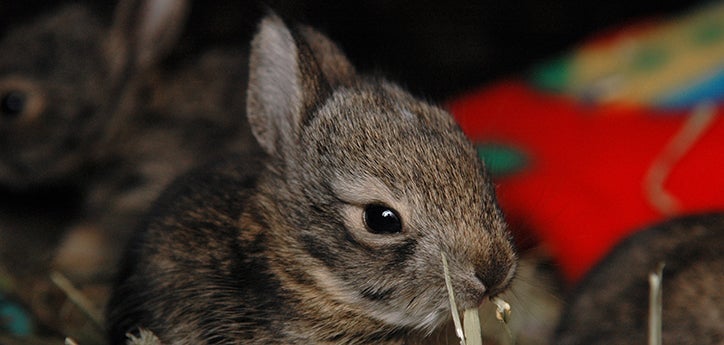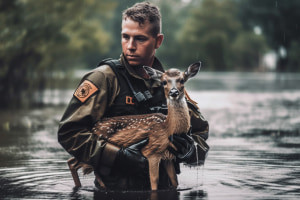Key Benefits of Hiring Experts for Wildlife Removal Burlington
The Role of Humane Wildlife Removal in Protecting Local Ecosystems
Humane wildlife removal is not just an ethical consideration but a pivotal component in safeguarding regional environments. By prioritizing non-lethal approaches, it resolves the fragile equilibrium between human development and wild animals habitat conservation. This approach not just mitigates conflicts however also makes certain the sustainability of biodiversity. Yet, the effectiveness of these techniques warrants better exam, specifically in metropolitan setups where human-wildlife communications are progressively intricate. As we ponder the implications of our approaches and their influence on environmental consistency, one need to wonder about exactly how these methods can be enhanced to promote an extra cooperative relationship with nature.
Recognizing Human-Wildlife Problems
Human-wildlife problems frequently occur when the natural environments of animals converge with human tasks, causing competition for resources and area. As urbanization and agricultural expansion continue to trespass upon wildlife regions, pets such as coyotes, raccoons, and deer find themselves in closer proximity to human populaces. This distance can result in harmful effects on both wildlife and people, as pets may trigger damages to crops, facilities, and personal building while people may inadvertently harm wild animals with habitat devastation and other anthropogenic pressures.
The intricacy of these conflicts comes from a variety of aspects. Modifications in land use, environment adjustment, and the fragmentation of environments usually force wildlife to adjust to brand-new settings, sometimes leading them right into domestic or industrial locations. Additionally, the schedule of human-generated food resources, such as rubbish and pet food, can draw in wild animals to human negotiations, aggravating communications and possible disputes.
Addressing human-wildlife disputes needs a nuanced understanding of pet habits, environmental characteristics, and socio-economic factors to consider. By studying these conservationists, policymakers and interactions can create techniques that aim to mitigate problems while maintaining biodiversity and maintaining environmental balance. The objective is to foster coexistence and minimize negative effect on both human neighborhoods and wildlife populations.
Value of Non-Lethal Approaches
Non-lethal methods of wild animals elimination symbolize this values by providing remedies that protect against injury to wildlife while dealing with human concerns. By using such techniques, we can manage wildlife communications without resorting to lethal measures, therefore protecting animal populaces and decreasing honest concerns connected with killing.
These techniques usually prove more reliable in the long term, as getting rid of private pets can develop a void that is quickly loaded by other members of the species or different varieties completely. This can lead to a cycle of recurring removal efforts, whereas non-lethal deterrents resolve the origin triggers of wildlife presence.
Additionally, non-lethal techniques foster coexistence by educating the public concerning wildlife behavior and encouraging harmonious living methods. This awareness can bring about much more lasting human-wildlife communications, ultimately guarding both area passions and pet well-being.
Advantages for Biodiversity
When non-lethal wildlife elimination approaches are used, they add dramatically to biodiversity preservation. By guaranteeing the safe relocation of animals as opposed to their removal, these approaches preserve environmental balance and protect the stability of ecosystems. Humane techniques minimize disruptions to local animals, permitting indigenous varieties to flourish. This preservation is important as each varieties plays an unique function, typically as pollinators, killers, or victim, which jointly sustain environment capability.

Moreover, these approaches foster coexistence in between people and wildlife, reducing adverse communications and protecting the abundant tapestry of life that identifies biodiverse areas. This strategy motivates a deeper understanding and respect for wildlife, cultivating community assistance for conservation initiatives. Inevitably, humane wild animals elimination is an essential part in safeguarding biodiversity, making certain ecosystems remain vivid and useful for future generations.
Techniques for Efficient Removal
Applying efficient techniques for humane wildlife removal calls for a comprehensive understanding of animal actions and environment needs. This expertise acts as the foundation for developing strategies that make sure the secure and ethical relocation of wildlife. One primary strategy entails carrying out extensive analyses of the affected area to identify the varieties existing and the particular challenges they position. This evaluation assists in devising tailored strategies that minimize stress and anxiety and harm to the pets.
Another important approach is employing exclusion techniques, which focus on securing entrance indicate stop animals from returning to frameworks. This method not just deals with the immediate problem however also works as a long-term solution, decreasing future conflicts over at this website between human beings and wild animals. The use of safe deterrents and repellents can motivate animals to abandon locations voluntarily, complementing other elimination initiatives.
Capture and moving need to always be a last option, used only when animals present a direct threat or are incapable to exit on their very own. In such instances, using gentle catches and making sure the launch of animals in ideal environments are important to safeguarding their well-being. Cooperation with wildlife specialists and adherence to legal regulations further boost the effectiveness of these strategies.

Supporting Coexistence in Urban Areas
Promoting conjunction in urban locations requires a diverse strategy that stabilizes human development with the needs of regional wild animals. Urban organizers and policymakers have to incorporate eco-friendly rooms, such as parks and wildlife hallways, right into city layouts to supply environments for indigenous types. burlington wildlife rescue.
Education and learning and awareness campaigns are essential in cultivating a society of conjunction. Locals require to comprehend the importance of wild animals and the role they play in local ecosystems. Workshops and educational sessions can outfit areas with knowledge on just how to decrease disputes, such as securing garbage and using gentle deterrents to prevent wild animals invasion.
Additionally, innovation can play a significant duty in promoting conjunction. Making use of wildlife surveillance systems, as an example, can aid track animal activities and inform metropolitan planning choices. Collaborations between ecological organizations, neighborhood governments, and area teams can further enhance these Related Site initiatives, ensuring that city growth advances sustainably while valuing the environmental equilibrium.
Final Thought
Humane wildlife removal is crucial for keeping ecological balance and biodiversity by employing non-lethal methods that decrease injury to animal populations. Ultimately, promoting coexistence in urban locations fosters a harmonious relationship between human beings and the natural environment, guaranteeing sustainable environments for future generations.
As urbanization and farming expansion continue to elbow in upon wild animals regions, pets such as raccoons, prairie wolves, and deer discover themselves in closer proximity to you could check here human populations. Non-lethal techniques of wild animals elimination personify this values by offering options that avoid harm to wild animals while resolving human worries. By utilizing such strategies, we can manage wild animals interactions without resorting to lethal actions, therefore protecting animal populations and lowering honest issues associated with murder.
Applying efficient techniques for gentle wild animals removal calls for a thorough understanding of animal actions and habitat needs.Humane wild animals removal is essential for preserving environmental equilibrium and biodiversity by employing non-lethal approaches that minimize harm to animal populaces.